I know I don't do as many bee reports on the blog as I used to but in a lot of respects our bees do the same thing over and over. Not that I don't delight in watching the hive, but how often can I report the same thing? Things that are fun to check are larvae. I especially like frames with black foundation, makes things ten times easier to see and it really pops the color of the bees.
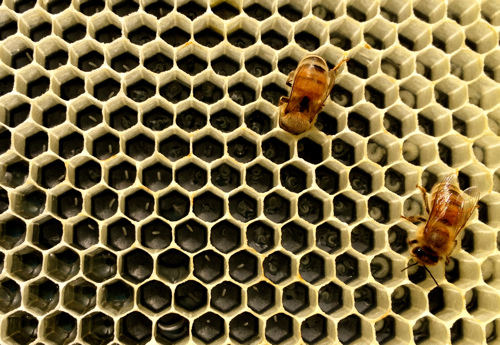
Above are mostly worker bee eggs (the things that look like mini rice) and some larvae off to the right. If you don't find your queen when you're digging around in your hive, you can be relatively confident that a she is alive somewhere in there because eggs stay in that shape for about three days as they are fed royal jelly from the worker bees.
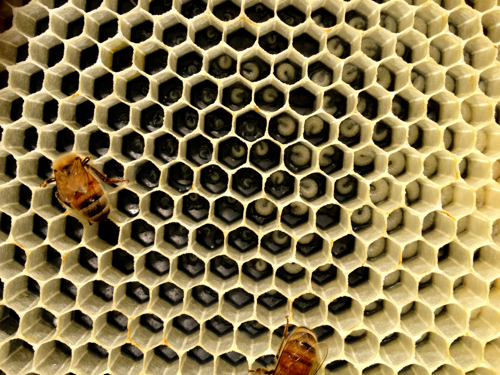
Once the larvae is three days old, it's switched to a mixture of pollen, honey and water (some bee sites call this bee bread). You can see at least one worker up there feeding someboyd as her head is wedged into a cell. The larvae grows and eats for six days.
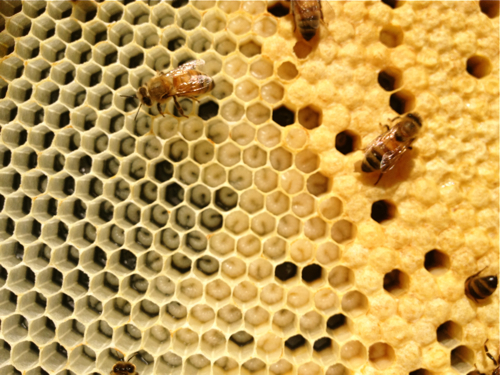
After six days, the workers cap over the brood and they pupate for 12 days as they go from a squishy blob into a segmented, leggy, winged bee complete with stinger.
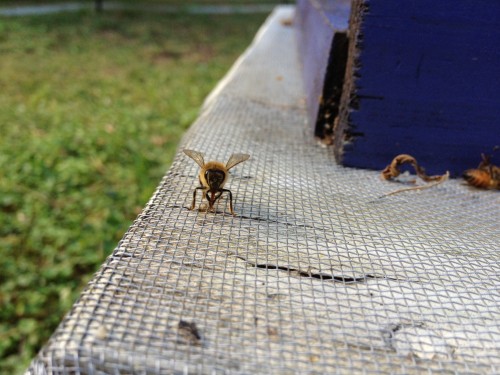
Like this girl! On a side note, while looking up something else entirely I wandered into an article on eating bee larvae. I suppose eating all that honey would make them tasty.
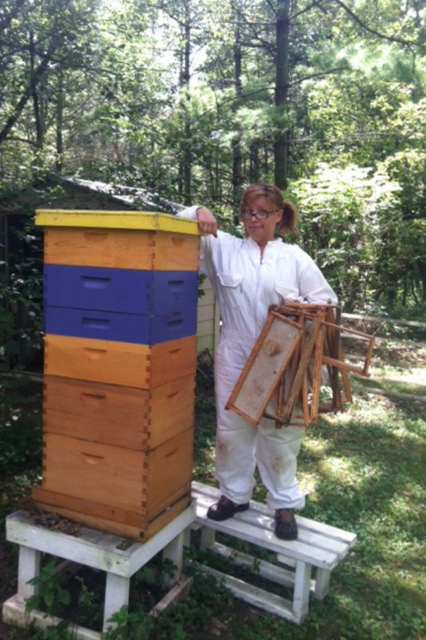
For those curious, I think our hives are doing splendidly this year. Many are as tall or even taller than I am because they are stacked with so many honey supers for us to harvest soon. Though, Lynne was quick to point out that since I'm only 5 feet tall, that's not saying much. Thanks, Lynne. ;)
